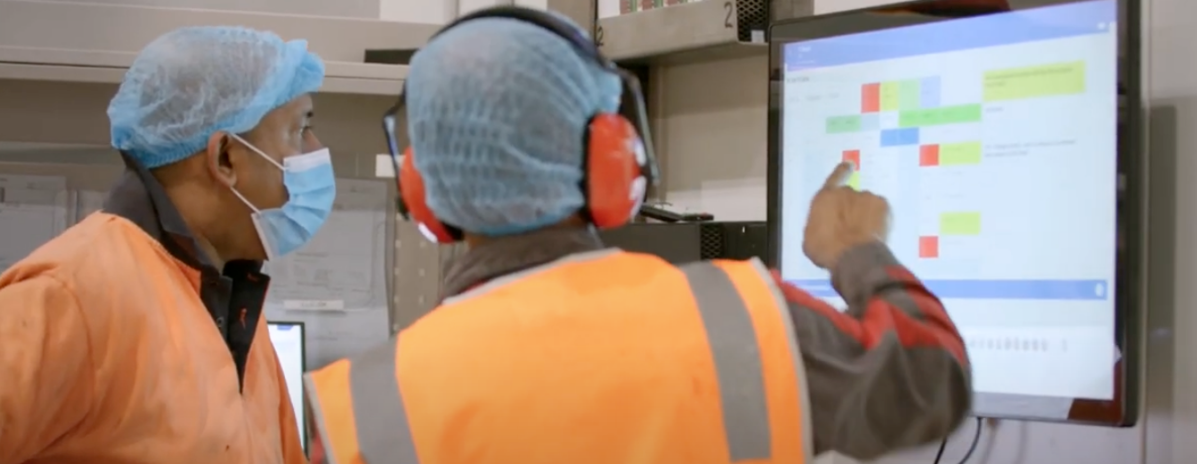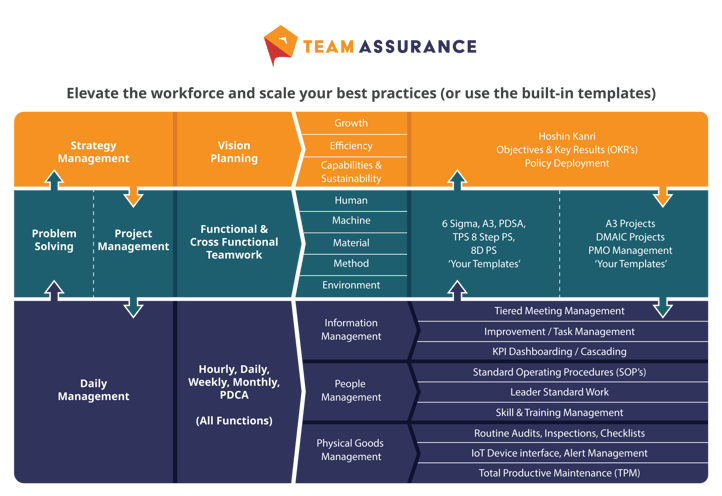Fostering Staff Skills for Win-Win Outcomes
.jpg)
Making the most of your workforce starts by identifying staff skills, sustaining them, and supporting the development of new capabilities.
When we talk about continuous improvement as the elimination of waste in the pursuit of flow, there are many types of waste that can have an influence. We can debate endlessly about which waste has the bigger impact and why – and none of the arguments would be wrong.
However, in my experience the single biggest waste from a Lean viewpoint is non-use of skill. The waste of not utilising or developing human capital to its potential.
The Importance of Utilising Human Capital in Continuous Improvement

Underutilised skills may reside locally or be found in a customer or a supplier – even a competitor. If we are unable (or unwilling) to search for and unlock the potential in people then we will struggle to optimise our process no matter how we approach it.
We can ‘buy’ our way to improvement to a point with equipment, layout, skills and additional labour. However, without genuine engagement, ownership and investment from the people on the ground improvement activity can only reach a certain level.
It's not only a question of uncovering skills and capabilities - it’s a matter of nurturing and developing it. We must provide clear, meaningful growth pathways for our people. Staff skills, ambition and opportunities can remain latent when the structure and environmental conditions are not conducive.
Too often people are set up for failure by a lack of integrity or planning in recruitment, onboarding and training. A lack of growth and development opportunities leads to people stagnating. Recognising where people require support and guidance or would like to build on or develop skills in other areas is critical. All of these barriers speak to a systemic failure to recognise how integral people are to business success.
Consequences of Neglecting Staff Skills Development
Non-use of skills means neglecting the single biggest resource every organisation has at their fingertips and is already paying for. It never ceases to amaze me how often organisations discuss employee engagement being a priority yet never actually enable it. I’m talking primarily about employee engagement at the frontlines. It's a massive opportunity that is lost to organisations when we treat those people as simply a body for conducting labour rather than a brain for driving innovation and a vessel of unknown, untapped potential.
People in (and associated with) our organisation are experts in the work they do. They are well trained and educated and they may have a wealth of other business / life experience. They have great innovative ideas and brains wired to solve problems. But we fail to utilise or even acknowledge this for the most part.
It is imperative that we work to understand and measure the current capability and competency within our organisations. We must also expose the gaps in our skills, knowledge, and leadership. This has to be a consultative, highly-inclusive, and ongoing process that organisations commit to in order to derive lasting benefit.
In the Lean world we talk about the concept of ‘respect for people’. This means that we place a great deal of value on the employee experience. We want to ensure that we provide the best quality work for a human being and provide that person with a clear sense of meaning and purpose in their daily work.
The Role of Leadership in Fostering Staff Skills
It is incumbent on leaders to provide all of the necessary tools, training, systems, and support to ensure that people are set up for success. They must engage in regular, meaningful conversations regarding the learning and development journey. Furthermore, leaders need to support this process appropriately through direct knowledge transfer and training, on the job resources, and good quality coaching.
Just as leaders seek to foster staff skills for continuous improvement, they must regularly review their own skills and approach to development. This sustains a practical understanding of continuous improvement and optimal processes for learning.
The Benefits of Developing Continuous Improvement Skills
.png?width=1876&height=1056&name=Be%20and%20Jalaf%20(1).png)
When implementing and practicing continuous improvement - in the right way - we open up conversations. We allow everyone to contribute, collaborate ,and to take ownership for making things better. When people, particularly at the frontlines, are given the time, permission, support and opportunity to have agency amazing things begin to happen.
Time after time I have seen individuals and teams demonstrate skills, behaviours and performance never seen or thought of previously. Simply because we have given them ownership, permission, and clarity - or just asked a few simple questions. People rise to the occasion when given opportunities to learn and grow in a nurturing environment where we want them to be their best selves.
If we genuinely treat our people with respect and give them an environment which helps them to thrive and shine we will uncover and create the superheroes that take our organisation and its performance to another level.
A C.I. framework to maximise employee potential
Fostering staff skills requires systems that support decision making at every level - supported by the right data and at all times, aligned to strategy. Optimally supporting individual mastery requires people to be able to easily access the training and know-how they need to better themselves.
The illustration below outlines how we designed an interconnected TeamAssurance platform which achieves these goals. One that avoids the locally optimised and disconnected 'Point solutions' (digital or analog) that do not help sustain either lasting business performance or maximising individual employee potential.

TeamAssurance enables organisations to foster staff skills development through an interconnected platform. If you'd like to explore the opportunities offered by digital aids to Lean tools contact us for a demonstration.

